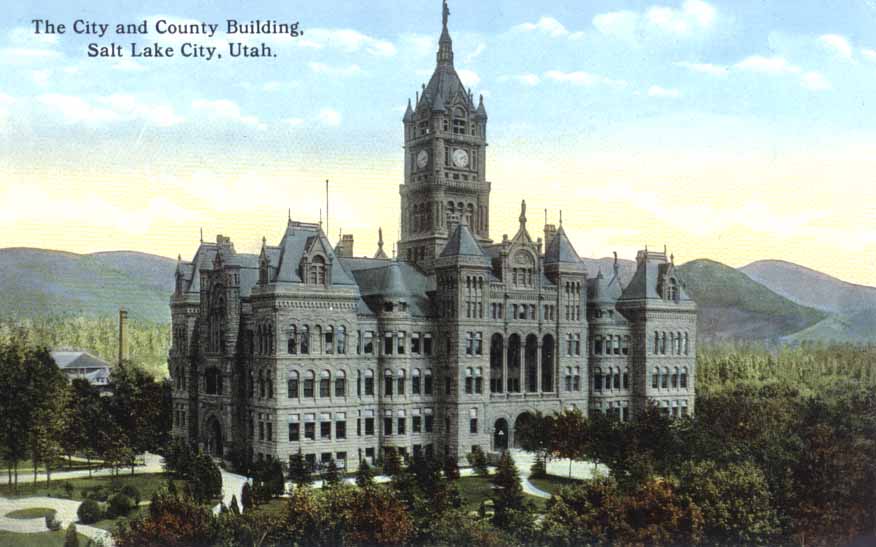City and County Records
Research Guides
About Local Government
The records of cities, towns, and counties document the closest government to us as citizens. As such, they are vital in understanding the history of Utah and its people. The Utah State Archives preserves and protects numerous local records.
County Records
Counties are a political subdivision with defined geographic boundaries that levy and collect taxes in order to provide services for the “safety, health, morals, and welfare of county inhabitants.” (Utah Code 17-50-3) Counties may also provide municipal-like services to unincorporated areas within their boundaries.
The duties and roles of county officials depend on the form of county government, as described in Utah Code 17-52A-2:
- County commission
- Expanded county commission
- County executive-council
- Council-manager
Though sometimes consolidated in smaller counties, the usual elected offices include:
- County Assessor
- County Auditor
- County Clerk
- Recorder
- Sheriff
- County Surveyor
- County Treasurer
Records are arranged into series that are associated with a creating agency.

City and Town Records
Also known as municipalities, cities and towns may be incorporated or not but are also political subdivisions of the state. There are different classes of cities based on population (Utah Code 10-2-301):
- 100,000 or more is a city of the first class
- 65,000 or more but less than 100,000 is a city of the second class
- 30,000 or more but less than 65,000 is a city of the third class
- 10,000 or more but less than 30,000 is a city of the fourth class
- 1,000 or more but less than 10,000 is a city of the fifth class
- Under 1,000 is a town
The duties and roles of city offices vary based on the form of government (Utah Code 10-3b), which in turn determines how records are created and retained.
- Council-Mayor
- Six-Member Council
- Five-Member Council
- Metro Township Council
Records are arranged into series that are associated with a creating agency.

Municipal Incorporation Records
Before Utah statehood, municipalities were incorporated through the Territorial Legislature. The legislature passed laws recognizing an area as a city or town, defining its geographic boundaries, setting the municipality's population classification, and acknowledging that incorporation’s municipal powers.
Incorporation documents more recently are primarily found in the Lieutenant Governor's City and town information files, now available online. In addition, selected municipalities are included from county incorporation record series (which are mostly for business incorporations).

| Lieutenant Governor | ||
| City and town information files (incorporation papers) | View Online | Series 20220 |
| Piute County (Utah). County Clerk | ||
| Incorporation case files | View Online | Series 3761 |
| Uintah County (Utah). County Clerk | ||
| Incorporation case files | View Online | Series 5015 |
| Washington County (Utah). County Clerk | ||
| Incorporation case files | View Online | Series 17893 |
Page Last Updated February 27, 2024.
About this Guide
Written by Gina Strack (city and county records) and originally published as separate guides in September 2014. Municipal incorporation records guide written by Avalon Snell and originally published in August 2020.
A grant from the National Historical Publications and Records Commission (NHPRC) has provided funding to arrange, describe, and microfilm the historic records of select counties, cities and towns. The National Historical Publications and Records Commission, a statutory body affiliated with the National Archives and Records Administration (NARA), supports a wide range of activities to preserve, publish, and encourage the use of documentary sources, created in every medium ranging from quill pen to computer, relating to the history of the United States.